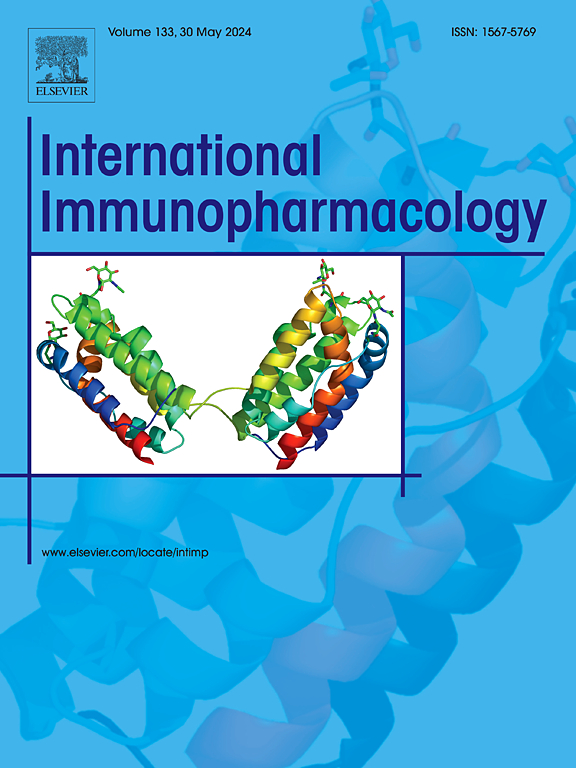Role of sacubitril/valsartan in modulating diabetes mediated cognitive and neuronal impairment
IF 4.8
2区 医学
Q2 IMMUNOLOGY
引用次数: 0
Abstract
Earlier investigations had established that Diabetes mellitus (DM) caused significant damage in the central nervous system, bringing about diabetic encephalopathy and increasing the risk of cognitive-related problems. Nonetheless, the inherent pathophysiology of cognitive dysfunctions in DM is not well understood. The current study aimed to examine the possible influences of sacubitril/valsartan (SAC/VAL), an angiotensin receptor blocker/neprilysin inhibitor (ARNI), on cognitive dysfunction associated with streptozotocin (STZ)-induced diabetic rats. SAC/VAL and VAL treatments were initiated three days after the diabetic condition was established and continued daily for eight weeks. Normal, non-diabetic rats were reserved as a control group. Both SAC/VAL and VAL treatment in diabetic rats ameliorated diabetes induced oxidative stress as indicated by reduced malondialdehyde (MDA), increased total antioxidant capacity (TAO) in hippocampal tissue and decreased serum advanced glycation end products (AGEs), also inflammatory and apoptotic changes were observed and proved by the reduction of tumor necrosis factor alpha (TNF-α) and caspase −3 in rat hippocampus. SAC/VAL administration to diabetic rats also improved neuronal damages as reflected by restored cAMP response element-binding protein (CREB), brain derived neurotrophic factor (BDNF) and pre-synaptic phosphoproteins, synapsin I and growth associated protein-43 (GAP-43) in the hippocampus of diabetic rats. Additionally, SAC/VAL treated diabetic rats markedly reduced signs of cognitive deterioration during the Morris water maze test. Collectively, these findings suggested that SAC/VAL might play a vital role in improvement of the cognitive impairment observed in diabetic rats through antioxidant, anti-inflammatory and anti-apoptotic actions.

求助全文
约1分钟内获得全文
求助全文
来源期刊
CiteScore
8.40
自引率
3.60%
发文量
935
审稿时长
53 days
期刊介绍:
International Immunopharmacology is the primary vehicle for the publication of original research papers pertinent to the overlapping areas of immunology, pharmacology, cytokine biology, immunotherapy, immunopathology and immunotoxicology. Review articles that encompass these subjects are also welcome.
The subject material appropriate for submission includes:
• Clinical studies employing immunotherapy of any type including the use of: bacterial and chemical agents; thymic hormones, interferon, lymphokines, etc., in transplantation and diseases such as cancer, immunodeficiency, chronic infection and allergic, inflammatory or autoimmune disorders.
• Studies on the mechanisms of action of these agents for specific parameters of immune competence as well as the overall clinical state.
• Pre-clinical animal studies and in vitro studies on mechanisms of action with immunopotentiators, immunomodulators, immunoadjuvants and other pharmacological agents active on cells participating in immune or allergic responses.
• Pharmacological compounds, microbial products and toxicological agents that affect the lymphoid system, and their mechanisms of action.
• Agents that activate genes or modify transcription and translation within the immune response.
• Substances activated, generated, or released through immunologic or related pathways that are pharmacologically active.
• Production, function and regulation of cytokines and their receptors.
• Classical pharmacological studies on the effects of chemokines and bioactive factors released during immunological reactions.

 求助内容:
求助内容: 应助结果提醒方式:
应助结果提醒方式:


